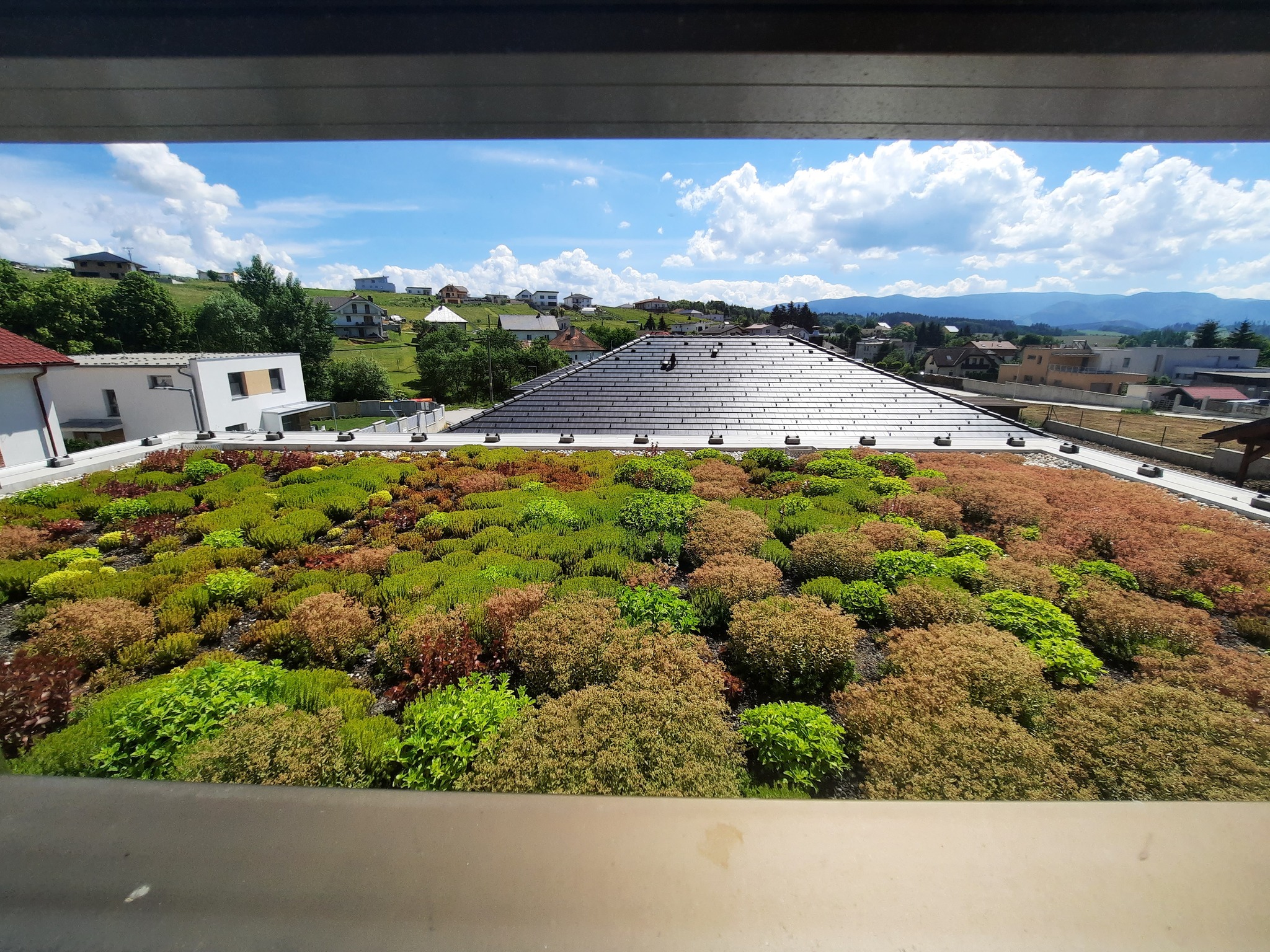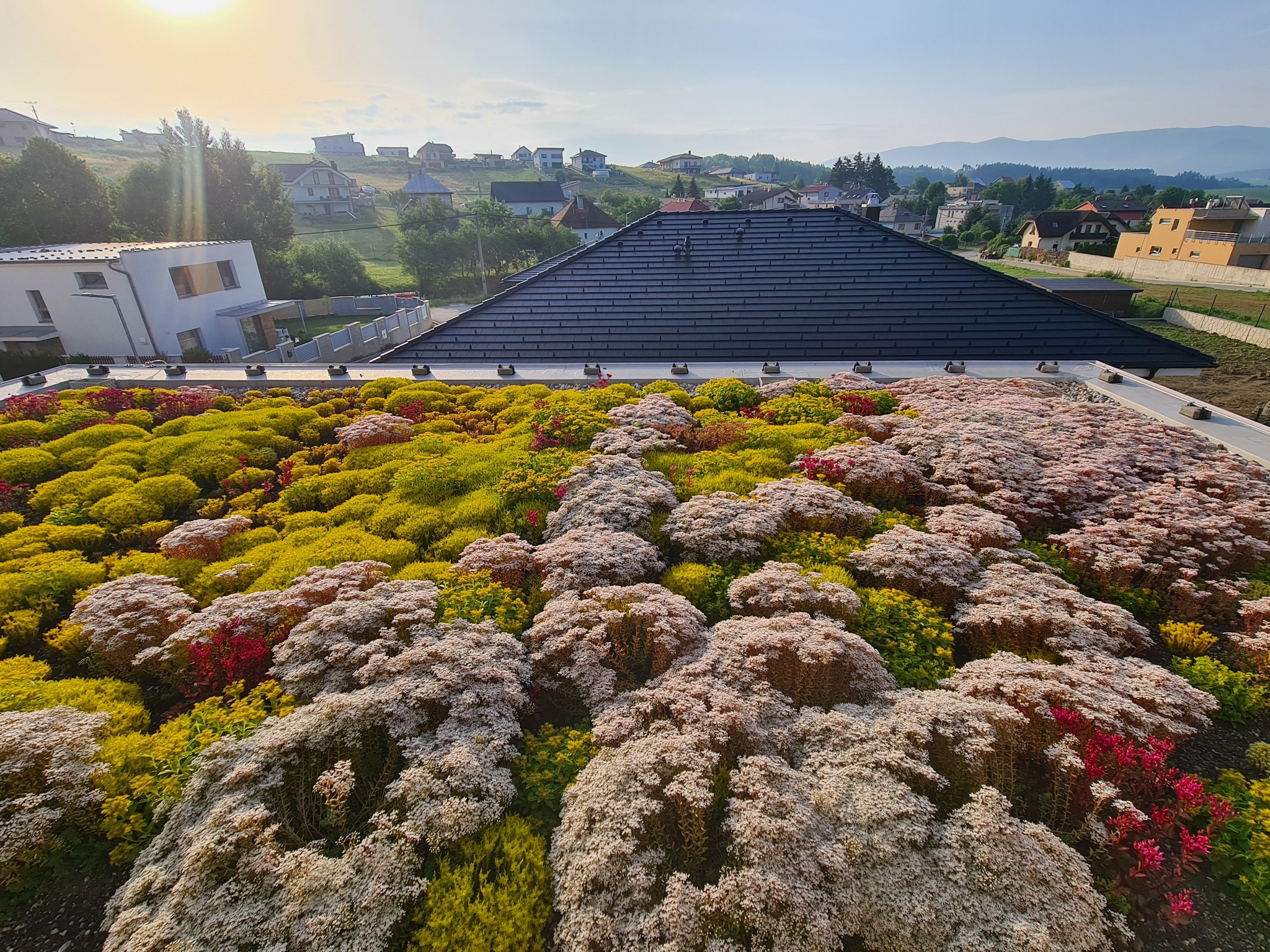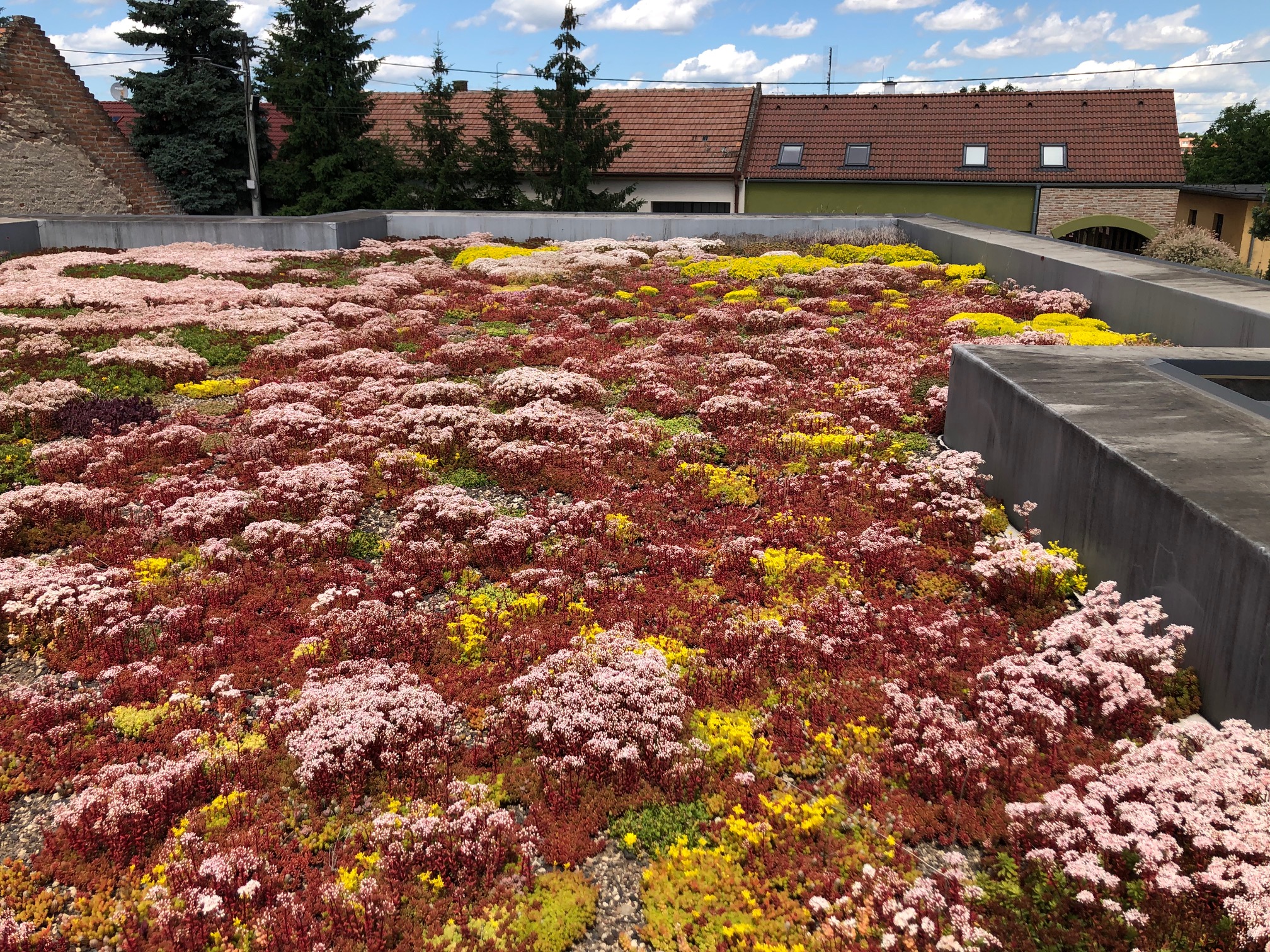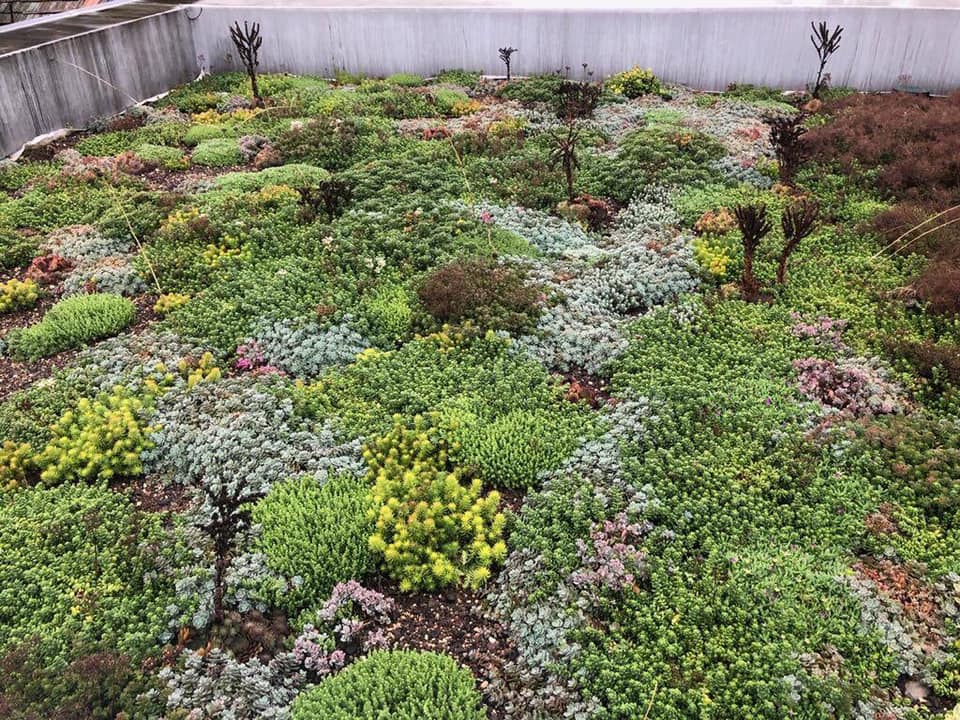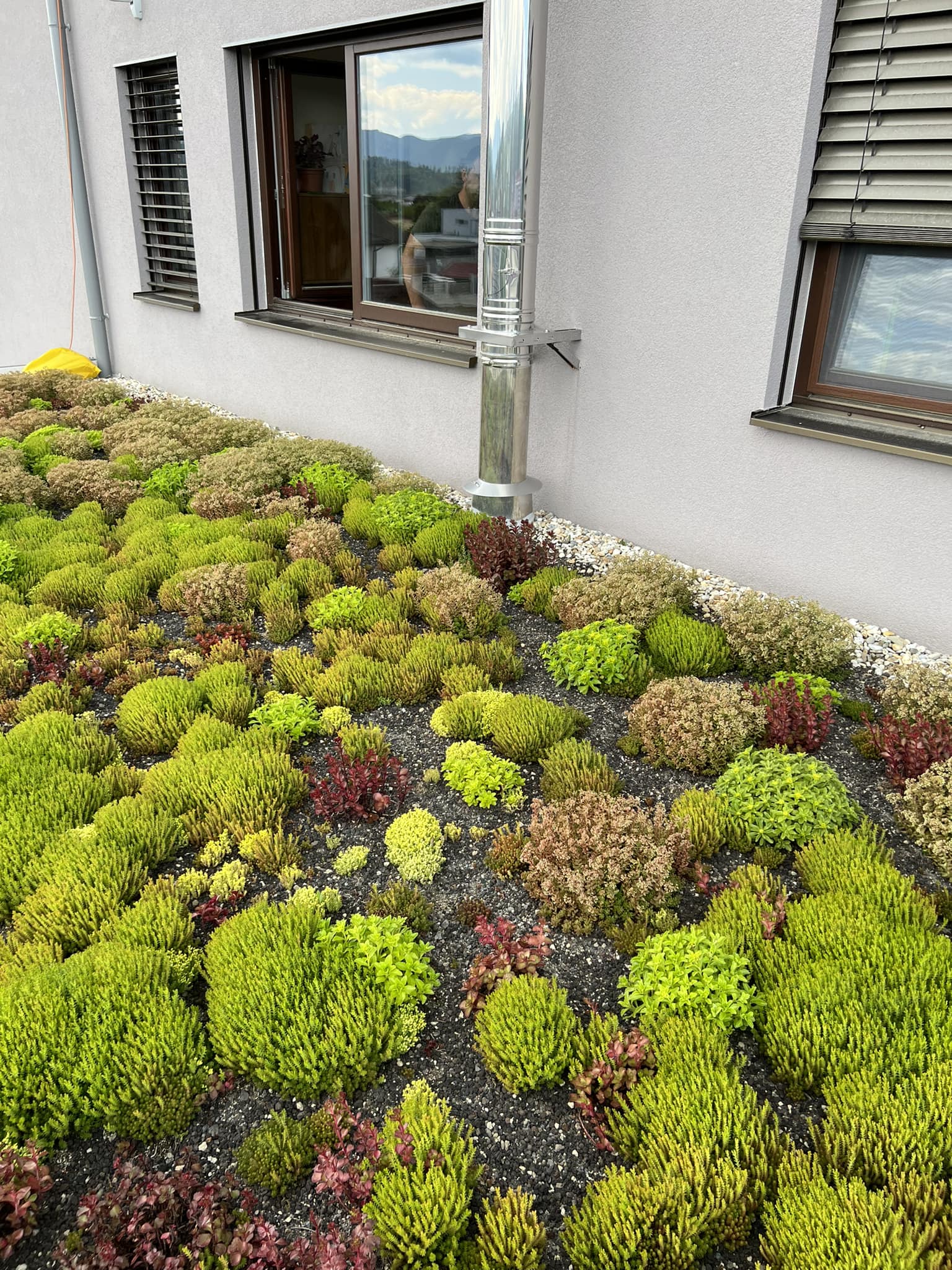Extensive or intensive green roof with stonecrops
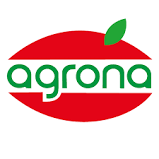
Address
Agrona, spol. s r.o.Žitná 2908/17
010 01 Žilina
IČO: 31 612 148
https://www.stresnysubstrat.sk
Contact person
Ľubomír Kmotorka; Ján Kramár0905 619 122 (Ľubomír Kmotorka) 0905 468 395 (Ján Kramár)
agrona@agrona.sk kramar@agrona.sk
View profile
Description
AGRONA, spol. s r. o., realizes single-layer or 2-layer extensive green roofs with planting of stonecrops. The main benefits of green roofs are:
- protection of the insulation from solar radiation and prolonging its life for decades,
- lowering the temperature of the roof to the air temperature (temperatures on a flat roof insulated with cardboard or fatrafol foil are up to 70 - 80 °C in summer),
- installation is carried out without unnecessary plastics,
- photovoltaic panels perform more optimally,
- reducing and slowing down rainwater runoff even during sudden torrential rainfall,
- reduction of noise,
- aesthetic function - the roof blooms in spring, provides food for bees - possibility to produce urban honey, which is rated as the best quality.
Economic benefits
Although there are costs associated with installing a green roof, it is proven that green roofs also provide economic benefits:
- it buffers the wear and tear of roofing materials (especially the top layer - PVC film) from UV radiation and weathering. Once a green roof is installed, this material lifetime is multiplied by decades and provides protection against mechanical damage.
- Provides an increase in thermal comfort indoors, the green roof layer also has a thermal insulation function. Studies measuring the cooling of interiors in densely built-up areas in various cities around the world have produced results that green roofs cause an average cooling of 1.4-2.5 °C indoors in the hottest months of the year. This significantly reduces air conditioning costs or increases thermal comfort.
Environmental benefits
The environmental benefits of a green roof include:
- water storage - in the event of heavy rainfall, a green roof can spread the runoff over several hours instead of minutes. It absorbs 50-80% of the rainfall and the excess water cools the roof before it runs off into the drainage system. This increases the humidity in the air and also reduces the risk of fire,
- contributes to lowering the temperature in cities during the summer months,
- filters pollutants and heavy metals from rainwater,
- protection of the atmosphere - absorption of CO₂ by plants (carbon dioxide is a greenhouse gas, CO₂ is food for plants),
- helps insulate the building from noise, the roof substrate helps block lower frequencies of sound while the plants block higher frequencies,
- support ecosystem diversity, support urban bees and bumblebees.
Examples of implementation of the solution in practice
Installation of green roofs on family houses

